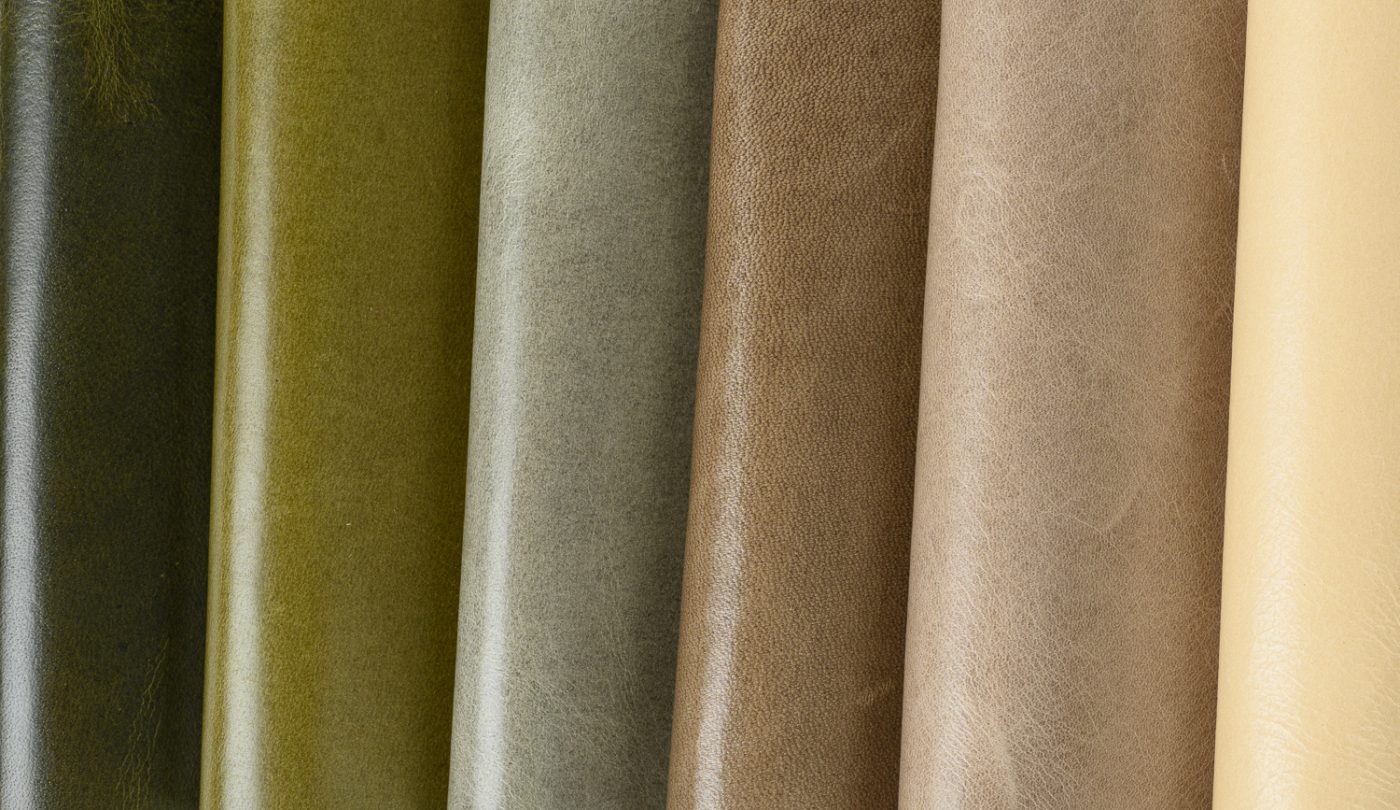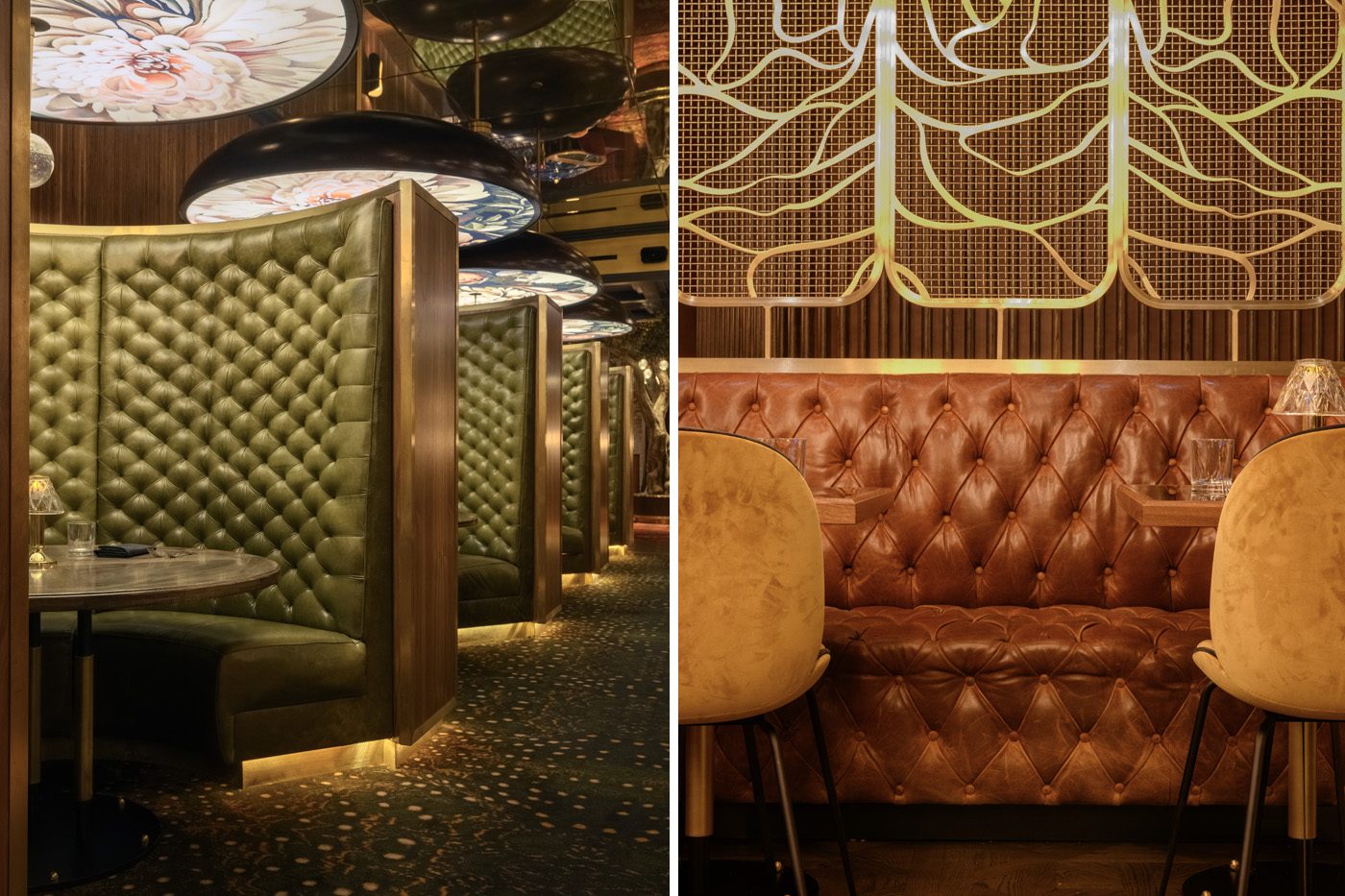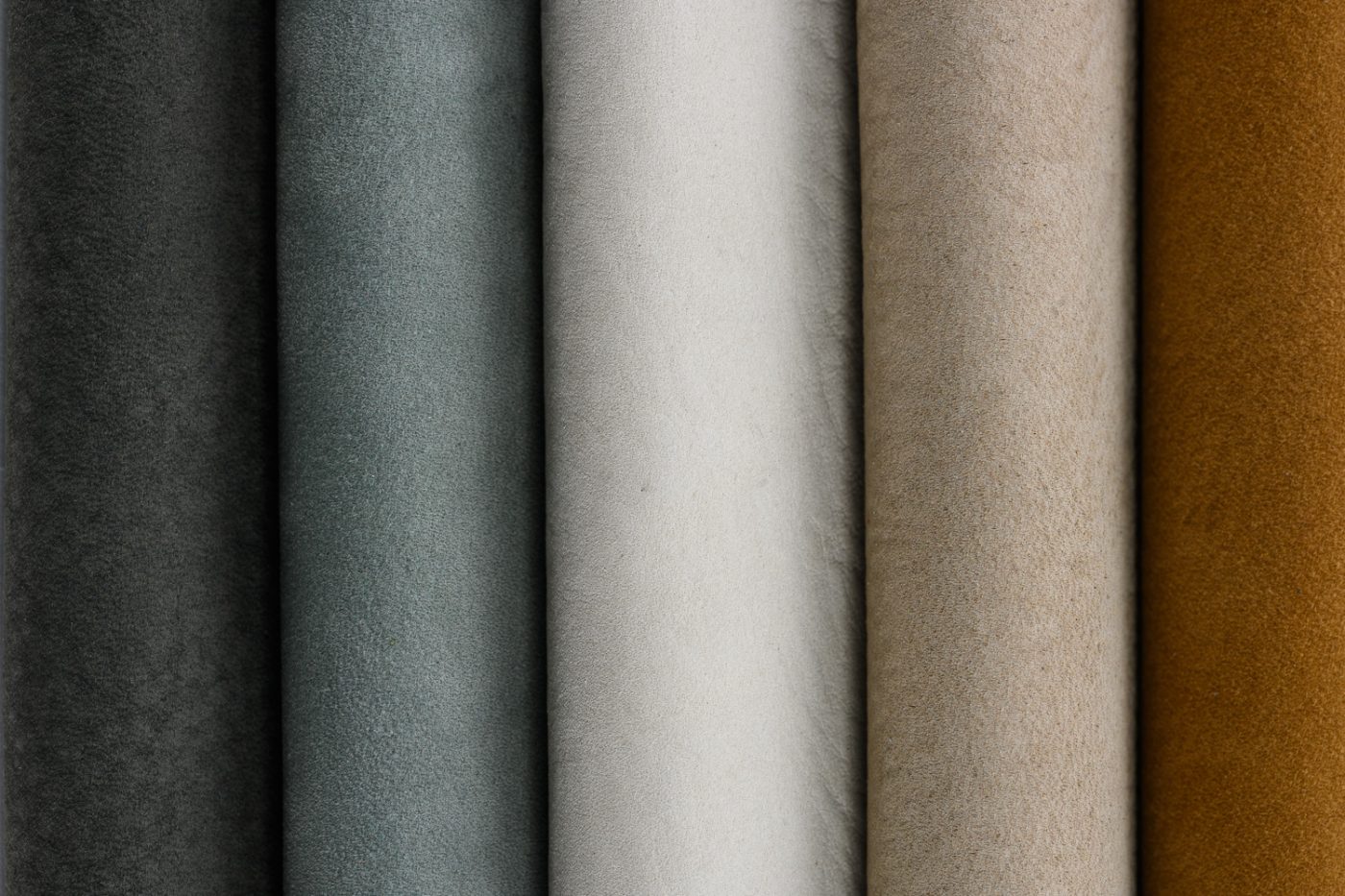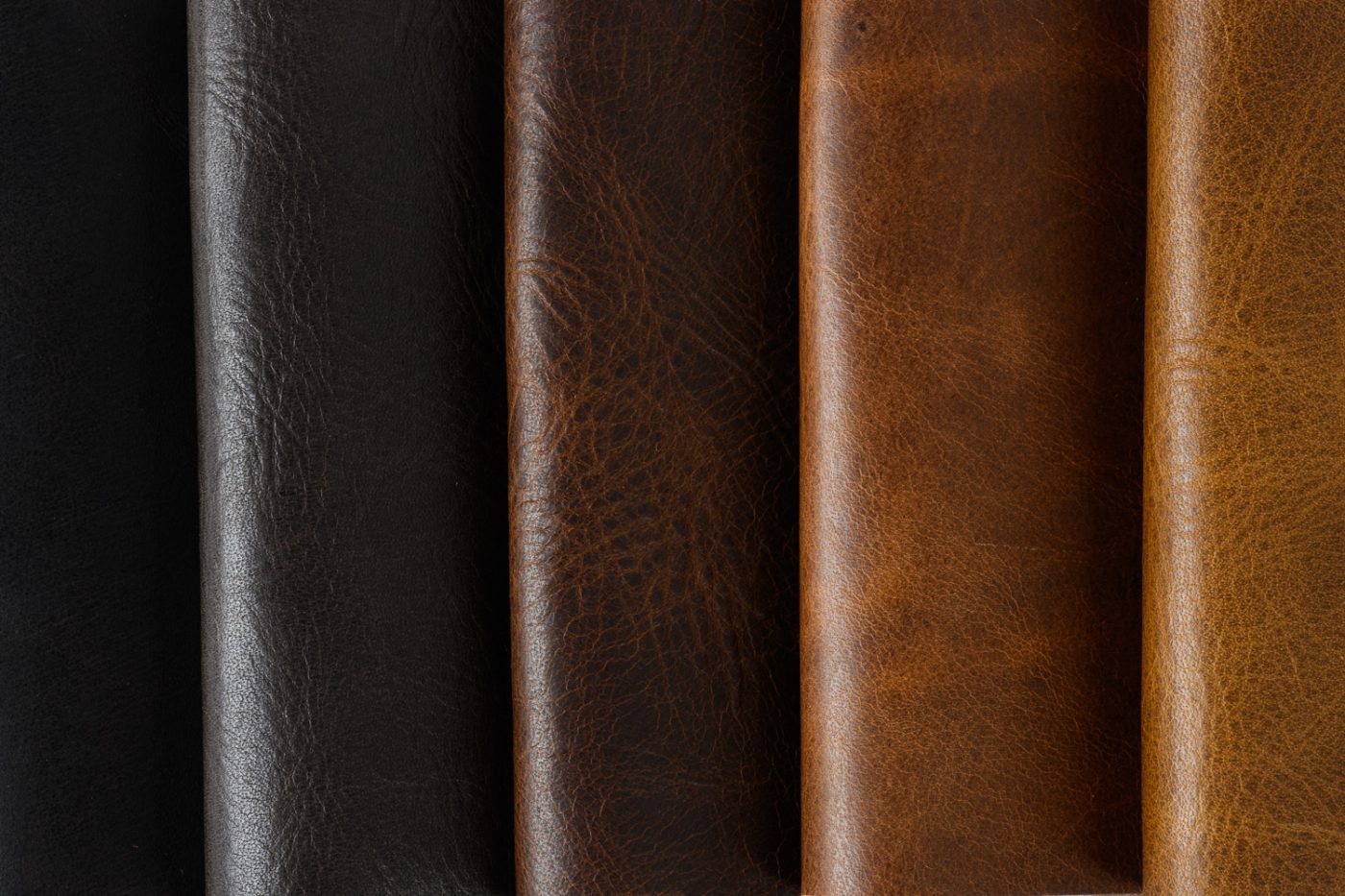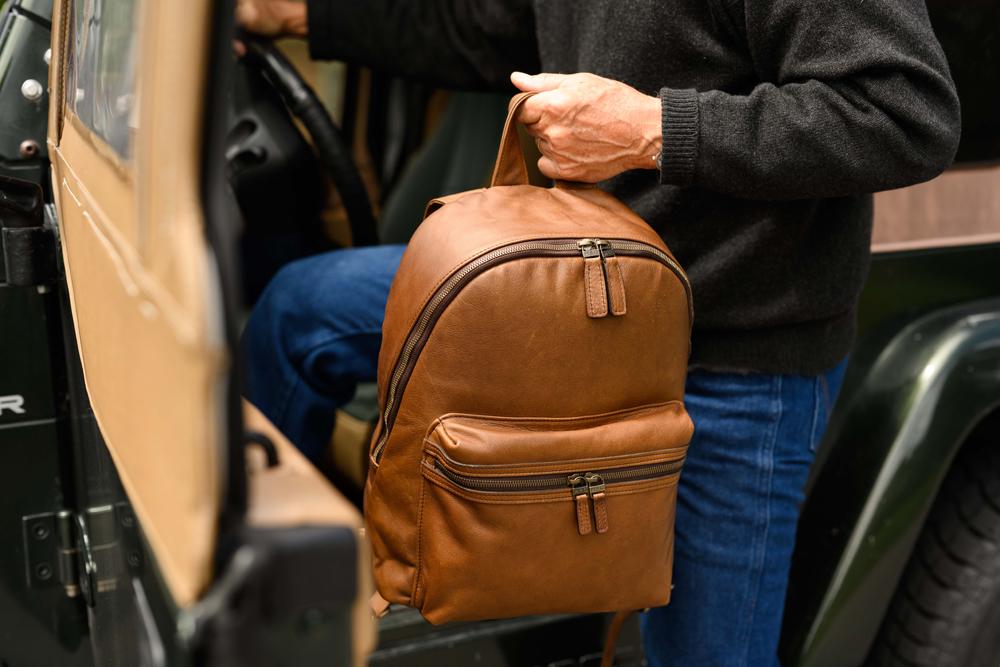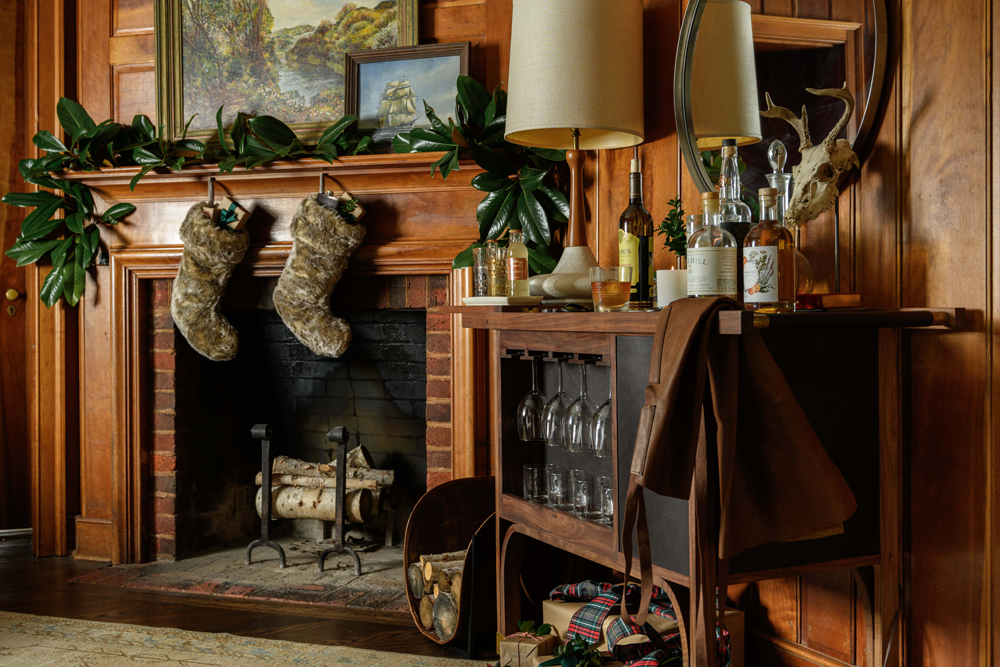Tanning
Leather tanning is the process of converting cleaned, perishable raw hides or skins into leather to preserve their natural beauty and inherent characteristics. The most common methods of tanning are Chromium and Vegetable Tanning. Chromium-Tanning is the most prevalent form of tanning.
Chrome-tanned leather is tanned using chromium salts. It is softer and more supple than vegetable-tanned leather and does not discolor or lose shape as drastically in water as vegetable-tanned leather. Chromium-tanned hides are also more receptive to color.
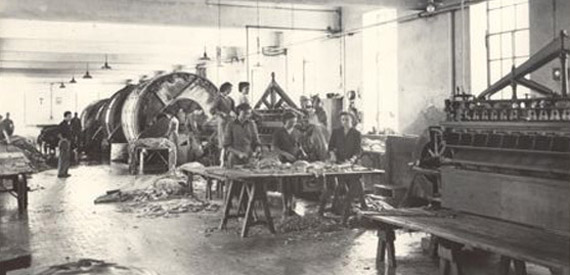
Traditional trimming of the hides in the early 1900’s
Vegetable-tanned leather is tanned using tannin and other natural ingredients found in trees and plants. The result is leather that has greater body and firmness than chromium-tanned leather. The majority of Moore & Giles leathers are chrome-tanned.
Hides are often treated several times during the tanning process with agents that will enhance the leather’s physical strength and ensure various characteristics desired in the end result. This is known as Retanning. Many of our leathers undergo a retanning process using chrome tanning agents or a combination of both chrome and vegetable tanning agents prior to being dyed and finished.
Dyeing
The majority of Moore & Giles leathers are dyed in drums using pure aniline dye.
Drum dyeing is the process of immersing the leather in the dye and tumbling it in a rotating drum to ensure maximum penetration of the dye throughout the hide.
Aniline dye is a translucent water-based dye without any added pigments. As aniline dye is absorbed, natural markings and inherent characteristics such as scars and wrinkles are brought out in each hide. Since absorption of dye may differ from area to area, slight variations in color are usually exhibited throughout the hide, much like wood varies when stained. For example, loose areas of the skin typically accept more dye and appear darker. These distinctive markings and nuances in texture and color should be considered natural beauty marks and are a testament to its authenticity.
Some of Moore & Giles leathers are tanned with a semi-aniline finish. Semi-aniline dye has a small amount of pigment or finish added to it to allow the natural characteristics of the hide to still show through while offering some of the benefits of color consistency and increased cleanability. For example, lightly pigmented leather won’t show a mark if you scratch it with your fingernail, like an aniline-dyed leather will.
Examples of Semi-aniline offerings from Moore and Giles leather include Deer Run, Napa Silk, Broadway, Libby, Scorpion, Aspen and Olympia.
Finishing
In general, finishing involves any process performed after the dyeing stage such as embossing, milling or waxing to achieve a desired result in terms of appearance and feel for the leather.
Certain leathers such as Harness and Brighton are naturally milled to enhance the leather’s grain or soften its hand. Hides are tumbled in rotating drums and sprayed with a combination of heat and misting of water during the milling process.
Many of our leathers receive a combination treatment of wax and oil which completely permeates the hide and provides inherent resistance to moisture. These treatments are designed to bring out all the attributes that make leather a truly original, natural product.
Similar to the grain of fine wood, leather has a myriad of nature’s signatures incorporated into it that are unique to each hide. These signatures can be found in the form of healed scars, wrinkles and differences in grain. Since most of our leather does not have any artificial finish applied to the surface, any inherent variations in texture are not masked or concealed. As each year passes, the leather will acquire a rich and beautiful patina that has a wealth of charm and character all of its own.
We employ a variety of techniques during the tanning process to enhance the natural appearance of our leathers. For example, ironing with heat and pressure creates a clear and glossy surface in leathers such as Absolute and Parliament with the added benefit of even more moisture resistance.
For clients, looking for uniform color consistency and maximum protection against wear and scratches, we offer a number of leathers that have been finished with a protective pigment or topcoat coating. For example, Olympia, Deer Run, Broadway and Napa Silk have a light layer of pigment on the surface. Our goal is to ensure consistent color but still offer a soft supple leather.
With the exception of suede and nubuck leathers, we endorse nearly all of our products for restaurant use.
